Binocular Vision Dysfunction (BVD) is a condition in which the two eyes cannot work together properly, leading to symptoms such as eye strain, headaches, double vision, and difficulty with tasks requiring sustained visual focus.
Binocular vision refers to the ability of both eyes to coordinate and work together, allowing us to perceive depth and see a single, three-dimensional image. In BVD, there is a mismatch in the alignment or movement of the eyes, disrupting this coordinated effort. This condition can arise from various causes, including eye muscle imbalances, neurological issues, or problems in the visual processing centers of the brain.
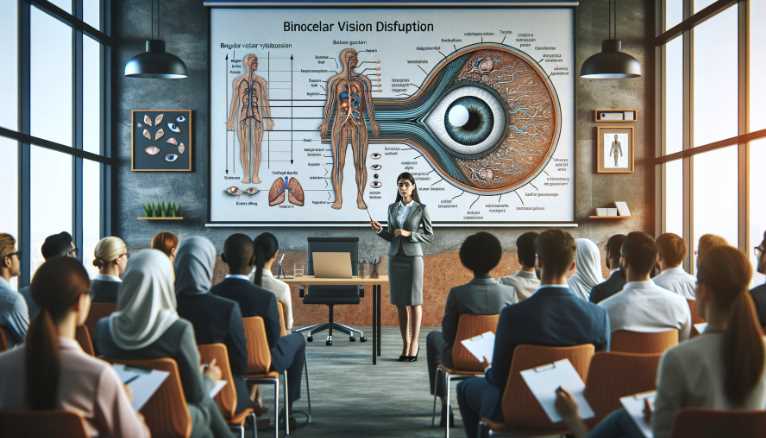
| Symptoms of BVD | Description |
|---|---|
| Eye Strain | Discomfort, pain, or fatigue in the eyes, especially during tasks that require sustained visual effort. |
| Headaches | Recurrent headaches, often associated with visual tasks or activities requiring prolonged concentration. |
| Double Vision | Seeing two images instead of one, either intermittently or consistently, leading to visual confusion. |
| Difficulty with Reading | Struggling with reading, comprehension, and maintaining focus on written or printed material. |
| Sensitivity to Light | Increased sensitivity to light (photophobia) can be a symptom, causing discomfort in bright environments. |
| Depth Perception Issues | Impaired ability to perceive depth and judge distances accurately, impacting activities like driving. |
| Eye Fatigue | Generalized tiredness and strain in the eyes, even after short periods of visual tasks. |
| Difficulty in Concentration | Challenges in maintaining concentration, especially during activities that involve visual attention. |
Causes of Binocular Vision Dysfunction
While the onset of BVD is usually gradual, there can be instances where a person becomes more aware of their symptoms suddenly. Binocular Vision Dysfunction (BVD) stems from a variety of factors, each playing a crucial role in disrupting the harmonious collaboration between our eyes and brain. Understanding these causes is pivotal for anyone grappling with the challenges posed by BVD.
Genetic Factors Contributing to BVD
A significant contributor to BVD lies in our genetic makeup. Having a family history of visual issues can increase the likelihood of inheriting conditions that affect binocular vision. Personally, I discovered the impact of genetics on my vision when several family members experienced similar visual challenges. Unraveling this genetic link paved the way for a deeper understanding of my BVD journey.
Developmental Issues During Childhood
Childhood development is a critical period for the formation of proper binocular vision. Any disruptions or delays during this phase can lead to BVD later in life. Reflecting on my own childhood experiences, I recognized that certain developmental issues, such as eye muscle imbalances or difficulties in eye teaming, contributed significantly to my BVD. Identifying these challenges early on is key to preventing prolonged visual issues.
Traumatic Events Leading to Binocular Vision Problems
Trauma, whether physical or emotional, can have lasting effects on our visual system. Head injuries, in particular, can disrupt the delicate balance needed for binocular vision. My personal encounter with a traumatic event highlighted the profound impact it can have on visual function. Understanding the connection between trauma and BVD sheds light on why some individuals may develop binocular vision problems following such incidents.
Genetic Factors Contributing to BVD
| Factors | Impact on BVD |
|---|---|
| Family history of visual issues | Increased likelihood of inheriting BVD |
Developmental Issues During Childhood
| Issues | Impact on BVD |
|---|---|
| Eye muscle imbalances | Potential cause of BVD |
| Difficulties in eye teaming | Contribution to BVD development |
Traumatic Events Leading to Binocular Vision Problems
| Events | Impact on BVD |
|---|---|
| Head injuries | Disruption of binocular vision |
Symptoms of Binocular Vision Dysfunction
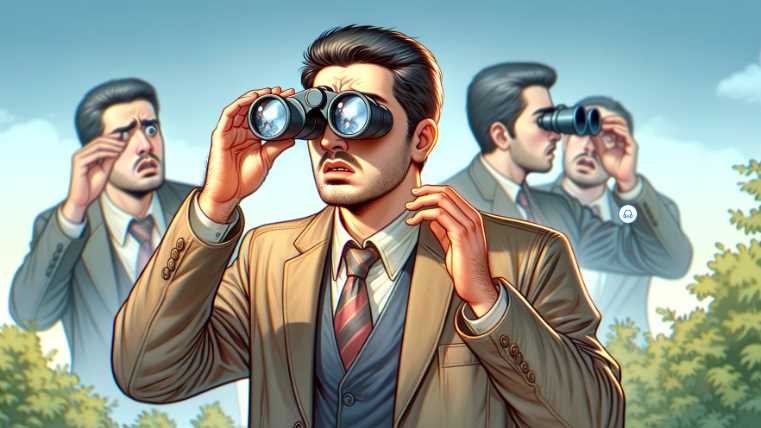
Binocular Vision Dysfunction (BVD) manifests in a variety of symptoms, each significantly impacting daily life. Recognizing these symptoms is crucial for seeking timely intervention and improving overall visual well-being.
Double Vision and its Impact on Daily Life
Experiencing double vision is a hallmark symptom of BVD, making it challenging to navigate the world with clarity. In my own journey, I’ve encountered instances where double vision disrupted simple tasks like reading or driving. This symptom not only affects visual comfort but also poses safety concerns in daily activities.
Eye Strain, Headaches, and Fatigue
Eye strain, persistent headaches, and fatigue are common indicators of BVD. Personally, I’ve felt the strain after prolonged visual tasks, accompanied by throbbing headaches and an overwhelming sense of exhaustion. These symptoms highlight the strain placed on the visual system and the need for effective management strategies.
Difficulty Concentrating and Reading
Individuals with BVD often grapple with difficulty concentrating, especially during tasks that require sustained visual focus, such as reading. I can attest to the frustration of losing concentration due to visual challenges. Addressing these difficulties is crucial for enhancing daily productivity and maintaining overall well-being.
Double Vision and its Impact on Daily Life
| Symptoms | Impact on Daily Life |
|---|---|
| Double vision | Challenges in tasks like reading, driving |
Eye Strain, Headaches, and Fatigue
| Symptoms | Impact on Daily Life |
|---|---|
| Eye strain | Discomfort during prolonged visual tasks |
| Headaches | Throbbing headaches affecting overall well-being |
| Fatigue | Overwhelming tiredness, especially after visual tasks |
Difficulty Concentrating and Reading
| Symptoms | Impact on Daily Life |
|---|---|
| Difficulty concentrating | Impaired focus during tasks requiring concentration |
| Reading difficulties | Challenges in reading due to visual discomfort |
Diagnosing Binocular Vision Dysfunction
Accurate diagnosis is the first step toward effectively managing Binocular Vision Dysfunction. Understanding the diagnostic process, from comprehensive eye exams to specialized tests, sheds light on the importance of seeking professional guidance.
Importance of Comprehensive Eye Exams
Comprehensive eye exams serve as the foundation for identifying BVD. These exams go beyond standard vision screenings, providing a detailed assessment of the visual system. Sharing my own experience, these exams helped uncover the nuances of my visual challenges, paving the way for targeted interventions.
Specialized Tests for Identifying BVD
Specialized tests play a crucial role in pinpointing the specific aspects of BVD. From assessing eye alignment to evaluating how well the eyes work together, these tests provide valuable insights. My journey through these tests offered a personalized understanding of my BVD, guiding the development of a tailored treatment plan.
The Role of Optometrists in Diagnosing and Treating BVD
Optometrists, with their expertise in visual health, play a pivotal role in diagnosing and treating BVD. Sharing my interaction with optometrists, it became evident that their specialized knowledge is instrumental in crafting effective treatment strategies. Establishing a collaborative relationship with an optometrist ensures comprehensive care for individuals grappling with BVD.
Importance of Comprehensive Eye Exams
| Key Aspects Addressed | Significance for BVD Diagnosis |
|---|---|
| Vision screenings | Identifying potential issues |
| Eye alignment tests | Assessing alignment for BVD detection |
| Overall visual health | Providing a holistic view of the visual system |
Specialized Tests for Identifying BVD
| Tests | Purpose in BVD Diagnosis |
|---|---|
| Eye teaming assessments | Evaluating how well the eyes work together |
| Depth perception tests | Assessing the ability to perceive depth |
| Binocular vision function tests | Pinpointing specific aspects of BVD for targeted treatment |
The Role of Optometrists in Diagnosing and Treating BVD
| Optometrist’s Responsibilities | Impact on BVD Diagnosis and Treatment |
|---|---|
| Specialized knowledge | Crafting tailored treatment plans based on individual needs |
| Collaborative approach | Establishing a partnership for comprehensive care |
Treatment Options for Binocular Vision Dysfunction
Effectively managing Binocular Vision Dysfunction (BVD) involves a tailored approach, addressing specific challenges to restore visual harmony. Here, we explore the key treatment options, drawing from personal experiences and insights into the multifaceted world of BVD.
Prescription Glasses and Prisms
Prescription glasses, carefully crafted to address the unique needs of individuals with BVD, play a pivotal role in optimizing vision. Personally, I found that the right pair of glasses corrected my vision and alleviated strain. Additionally, prisms, when integrated into the lenses, assist in aligning the eyes, reducing double vision, and enhancing overall visual comfort.
Vision Therapy Exercises
Vision therapy exercises offer a hands-on, targeted approach to improving binocular vision. These exercises, curated by eye care professionals, focus on strengthening eye muscles, enhancing eye teaming, and promoting visual coordination. My journey with vision therapy exercises revealed a gradual improvement in my ability to focus and process visual information, ultimately contributing to a more seamless visual experience.
The Role of Technology in BVD Treatment
Embracing technology has revolutionized BVD treatment. Specialized apps and devices designed to enhance eye coordination and focus have become integral components of my personal treatment plan. The intersection of technology and vision care ensures a dynamic and engaging approach to managing BVD, offering a glimpse into the future of visual rehabilitation.
Prescription Glasses and Prisms
| Treatment Option | Purpose in BVD Treatment |
|---|---|
| Prescription glasses | Correcting vision and reducing strain |
| Prisms | Aligning the eyes and minimizing double vision |
Vision Therapy Exercises
| Type of Exercise | Targeted Outcome in BVD Treatment |
|---|---|
| Eye muscle strengthening | Improving overall eye muscle function |
| Eye teaming exercises | Enhancing the ability of the eyes to work together |
| Visual coordination | Promoting better coordination between the eyes |
Role of Technology in BVD Treatment
| Technological Application | Contribution to BVD Treatment |
|---|---|
| Specialized apps | Engaging exercises for eye coordination and focus |
| Vision-enhancing devices | Dynamic tools for improving overall visual performance |
Basic Tips for Managing Binocular Vision Dysfunction
Beyond formal treatment, practical tips play a crucial role in managing Binocular Vision Dysfunction (BVD) on a day-to-day basis. These simple adjustments can significantly enhance visual comfort and overall well-being.
Proper Lighting and Ergonomics
Optimizing lighting and ergonomics in your environment is a small yet impactful step in managing BVD. Adequate lighting reduces eye strain, and proper ergonomics minimizes physical discomfort during visual tasks. I’ve personally found that a well-lit and ergonomic workspace contributes to a more comfortable and productive visual experience.
Regular Breaks to Reduce Eye Strain
Incorporating regular breaks into your routine is essential for mitigating eye strain associated with BVD. Short breaks during visually demanding tasks allow the eyes to rest and recover. Implementing this simple practice has been instrumental in maintaining my focus and reducing overall visual fatigue.
Lifestyle Changes to Support Visual Health
Lifestyle changes can significantly impact visual health for individuals with BVD. Adequate hydration, a balanced diet rich in eye-friendly nutrients, and sufficient sleep contribute to overall well-being. Making these adjustments has positively influenced my ability to manage the challenges posed by BVD, fostering a holistic approach to visual health.
Proper Lighting and Ergonomics
| Recommendations | Impact on BVD Management |
|---|---|
| Adequate lighting | Reducing eye strain and discomfort during tasks |
| Ergonomic workspace | Minimizing physical strain during visual activities |
Regular Breaks to Reduce Eye Strain
| Break Schedule | Influence on BVD Management |
|---|---|
| Short breaks during tasks | Allowing eyes to rest and preventing visual fatigue |
Lifestyle Changes to Support Visual Health
| Lifestyle Adjustments | Contribution to BVD Management |
|---|---|
| Hydration and nutrition | Supporting overall visual well-being |
| Sufficient sleep | Enhancing the body’s ability to recover and rejuvenate |
Binocular Vision Dysfunction in Children
Binocular Vision Dysfunction (BVD) in children poses unique challenges that require early recognition and intervention. Understanding the distinct aspects of BVD in the pediatric population sheds light on how parents, educators, and healthcare professionals can support optimal visual development.
Early Detection and Intervention
Early detection of BVD in children is paramount for effective intervention. Regular eye screenings, particularly during critical developmental stages, can uncover potential issues. My own experiences and interactions with parents underscore the importance of being proactive in identifying signs of BVD to ensure timely and targeted interventions.
Impact on Academic Performance
BVD can significantly impact a child’s academic performance. Difficulties in focusing, reading, and processing visual information may hinder learning. As a result, children with undiagnosed BVD may struggle in school. Personal anecdotes emphasize the need for collaboration between parents, educators, and eye care professionals to create an environment that supports a child’s visual health and academic success.
Signs of BVD in Children
| Signs | Possible Impact on Academic Performance |
|---|---|
| Avoidance of reading tasks | Hindrance in developing literacy skills |
| Complaints of headaches | Disruption of concentration during academic activities |
| Poor eye-hand coordination | Challenges in fine motor tasks and writing |
Collaborative Approach to BVD in Children
| Stakeholder | Role in Early Detection and Intervention |
|---|---|
| Parents | Observing and reporting visual concerns to healthcare professionals |
| Educators | Identifying signs of BVD and creating a supportive learning environment |
| Eye Care Professionals | Conducting comprehensive eye exams and recommending appropriate interventions |
What are the signs of a binocular vision problem?
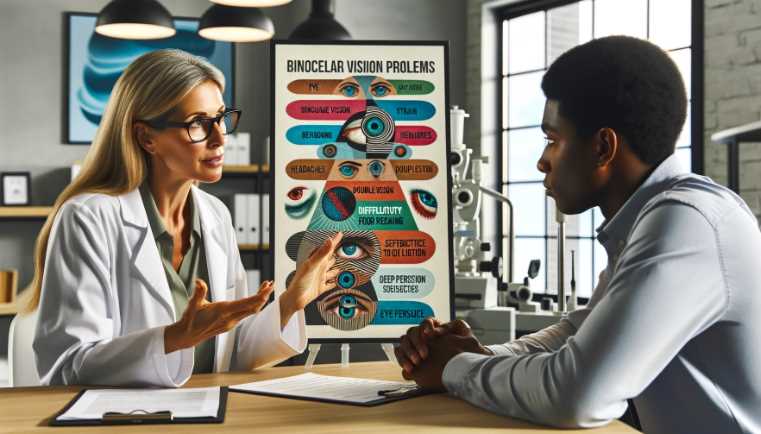
Binocular vision problems can manifest through various signs, including eye strain, headaches, double vision, difficulty in reading, sensitivity to light, depth perception issues, eye fatigue, and challenges in concentration. If you experience any of these symptoms, it’s crucial to consult with an eye care professional for a comprehensive assessment.
How do you fix binocular vision dysfunction?
The approach to fixing binocular vision dysfunction (BVD) depends on the underlying cause. Treatment may involve prescription glasses to correct refractive errors, vision therapy to improve eye coordination, or in some cases, surgery to address specific muscle imbalances. A personalized treatment plan recommended by an eye care specialist can effectively address BVD.
Can binocular double vision be cured?
The treatment of binocular double vision, known as diplopia, depends on the cause. In some cases, it can be cured through corrective lenses, prisms, or vision therapy to enhance eye coordination. However, if diplopia results from a more severe underlying condition, additional medical intervention may be necessary.
What is the cause of binocular diplopia?
Binocular diplopia can have various causes, including eye muscle imbalances, neurological issues, trauma, or specific medical conditions affecting the eyes. Conditions such as strabismus, cranial nerve palsies, or disorders affecting the brain’s visual processing centers can lead to binocular diplopia.
How do I test my binocular vision?
A comprehensive eye examination by an optometrist or ophthalmologist is necessary to test binocular vision. Tests may include assessing eye alignment, evaluating eye movements, checking for refractive errors, and conducting stereopsis tests to gauge depth perception. These evaluations help identify any issues with binocular vision.
Can you improve binocular vision?
Yes, binocular vision can often be improved through vision therapy, which involves exercises and activities designed to enhance eye coordination and strengthen eye muscles. Optometric vision therapy, when prescribed by a qualified professional, can be effective in addressing binocular vision dysfunction and related symptoms.
Does binocular vision dysfunction go away?

The outcome of binocular vision dysfunction varies depending on the underlying cause and individual factors. In some cases, it may be temporary and improve with appropriate treatment, while in others, it may require ongoing management. Early detection and intervention increase the likelihood of successful outcomes.
Can glasses fix BVD?
Prescription glasses may be part of the treatment for binocular vision dysfunction, especially if refractive errors contribute to the problem. Corrective lenses can help alleviate symptoms such as eye strain and double vision. However, glasses alone may not address all aspects of BVD, and additional interventions like vision therapy may be recommended.
How is binocular dysfunction diagnosed?
Diagnosis of binocular dysfunction involves a comprehensive eye examination. The eye care professional assesses eye alignment, movement, refractive errors, and performs tests to evaluate depth perception. The results guide the diagnosis, and a personalized treatment plan is developed based on the specific findings.
In summary, recognizing the signs, seeking professional evaluation, and following a tailored treatment plan can effectively address binocular vision dysfunction. If you experience any visual symptoms, consulting with an eye care specialist is essential for accurate diagnosis and appropriate management.
Resources and References:
- American Optometric Association (AOA):
- National Eye Institute (NEI):
- College of Optometrists in Vision Development (COVD):
- American Academy of Ophthalmology (AAO):

I am an enthusiastic student of optics, so I may be biased when I say that optics is one of the most critical fields. It doesn’t matter what type of optics you are talking about – optics for astronomy, medicine, engineering, or pleasure – all types are essential.
Table of Contents
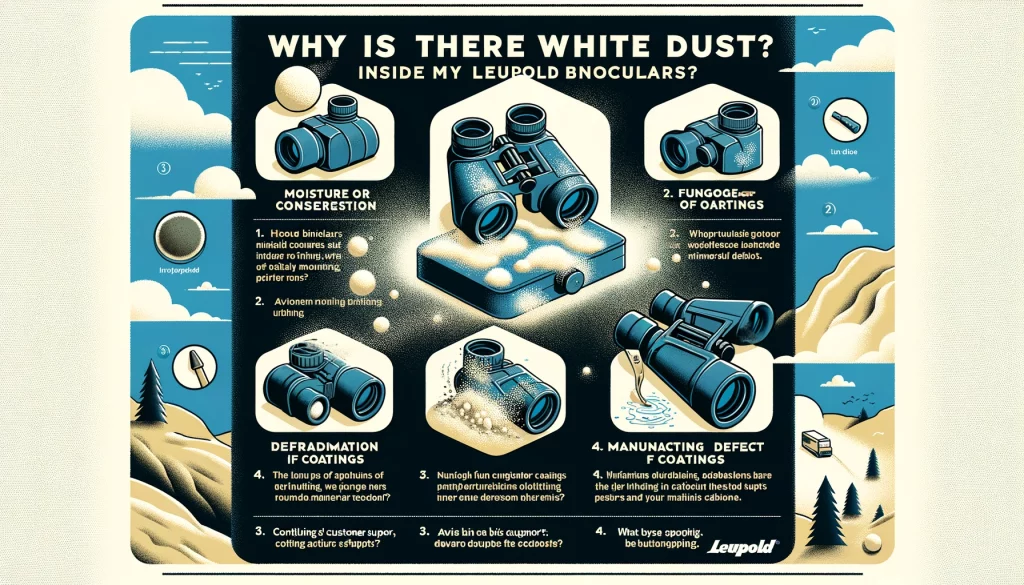
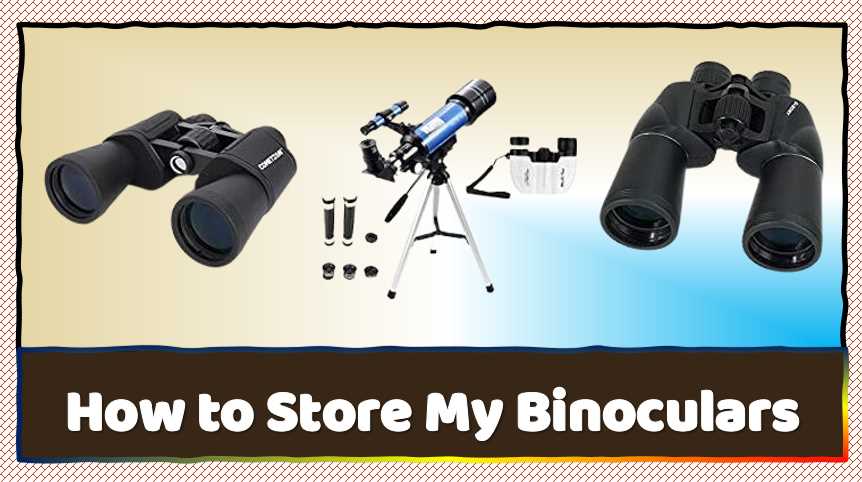
Pingback: Unraveling the Controversy: Is Binocular Vision Dysfunction Real?
Pingback: What causes binocular vision dysfunction?
Pingback: How do we test for binocular vision dysfunction?